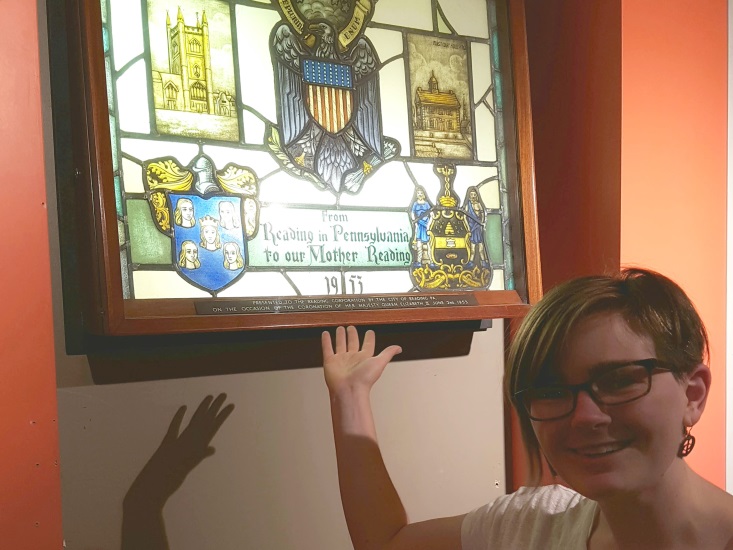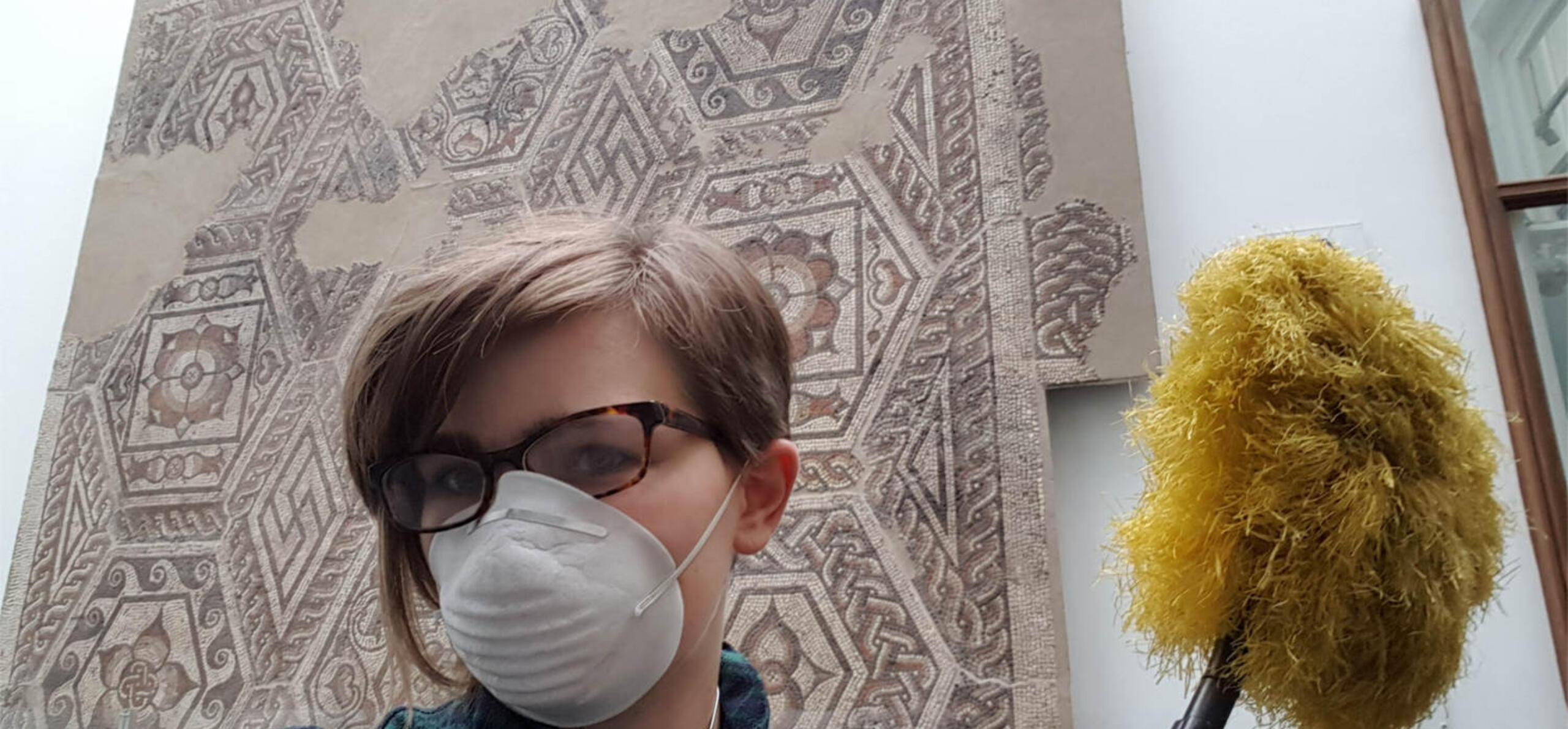The first thing people always ask me is: how did an American end up in Reading?
When I made the decision to head back to school for my second degree, I chose the University of Reading for its fantastic Museum Studies and Archaeology program. It was a little daunting moving over 5,000 miles from my home outside San Francisco but, as the last year has proved, I have fallen in love with Reading.

At the end of my first term I received a placement at Reading Museum as the ‘Reading Abbey Quarter Retail Research Intern’, a mouthful of a title and an amazing experience. My job was to delve into the retail opportunities of the relaunch of the Reading Abbey [http://www.readingabbeyquarter.org.uk/] and to get the gift shop in shape for the move behind the new reception in the Town Hall. Over the past eight weeks I have googled wholesale medieval gifts, contacted mead suppliers and researched stuffed toy lions with tiny shirts. This was broken up with analysing numerous spreadsheets of sales figures to create sales reports.
It is amazing the differences between the UK and America that crop up in everyday tasks. These sales reports not only told me how the shop was doing but also made me realise how much the British love their tea towels (we sold over 500 tea towels last year alone). Back home tea towels are a novelty sold at fancy home good stores but now I wonder why we don’t use them.
Another aspect of museum life is the children’s learning programs. Reading Museum offers many different learning sessions and children’s activities for the whole family to enjoy. My previous degree was in Fine Arts Photography which came in handy as I was deployed as a photographer for these events. I loved every moment, watching the children experience history and having a chance to be creative. We could not help taking a photograph of the American in the Forbury Gardens with a bonnet as part of the Jane Austen’s Bonnet Session.

Besides my retail journey, I have had the opportunity to explore other aspects of life at a museum. Reading Museum is going through a significant remodel of the first floor galleries which has afforded me a chance to deconstruct an exhibit. I assisted the collections team to remove everything from what we affectionately called ‘The Pit’ in the Reading People and Place Gallery on the ground floor. We called it the Pit because the display went below the ground level so my colleagues had to climb into the pit and lift the objects over and out.

Deconstructing a display is a chance to reverse-engineer an exhibit by taking each item out, sorting and packaging them away. Handling objects is a bit intimidating, and objects should only be handled when you have a really good reason to do so. Learning to package correctly is very important because you cannot package objects as if you are moving house. As I found out, there is an art form to wrapping objects, placing them so they do not move and be easily recognised to limit handling.
Another lesson I learned when we deconstructed the Pit was I finally realized what a spanner was. After years of hearing the word from Doctor Who to Agatha Christie I now know that a spanner is a wrench. I also got a few confused looks when I asked for Allen wrenches. Apparently here in the UK they are called Allen Keys which makes a bit more sense. It is the many simple things that can be completely different.
A part of the former Pit display lives on in my kitchen, the poster of the Duke Street Bridge from the 1700s. I loved the print so much I asked if I could keep it instead of it being binned. The walk home along the Kennet Avon Canal hauling the large poster caused a lot of odd glances. As I entered the path across from Jackson’s Corner I saw the perfect photo op. I stopped the nearest stranger and asked to take my photo with the old image in front of the bridge.

Getting the behind the scenes view is not always glamorous. The whole museum team from Collections to Learning pitches in for a ‘High Clean’ every six months. On a Monday when the Museum is closed and eerily empty, we take shifts to clean all the galleries. Armed with dusters, face masks and rags we make our way from the ground floor to the Windows Gallery making the museum sparkle. The next time you visit the Silchester Gallery look up. I have never noticed how high the ceiling is until the tallest ladder was needed to dust the top of the columns.

Starting this holiday season we are phasing in Abbey Revealed and Reading items in our shop, which are going to be amazing gifts or special something for yourself. We are going to start selling mead, Abbey Quarter Tea Towels and a tin postcard pack of vintage photographs of Reading (my baby of a project). Reading Museum holds the photographic catalogue from the Reading and Berkshire Chronicle which shows the sometimes bizarre and wacky life of Reading past. I happily and somewhat obsessively scoured the digital archive wondering what the backstories were. Did you know that mannequin fashion shows were a form of entertainment? Or that a tiger cub was taken on an outing to Broad Street?
The main lesson I learned about working at a museum is that it is a team sport. If someone needs help, even if it’s not in your job description, you give them a hand. My fellow employees have been amazing in allowing me to explore beyond my retail duties and understand the broader scope of how a museum operates. They have also been patient in kindly reminding me to switch the dates around and to add in those tricky extra U’s to my reports. My interaction with visitors while substituting for the Galleries Team has helped me overcome my subtle Americanisms as well. I have stopped suggesting the elevator when people ask how to access the second floor, and now correctly suggest the lift.

Tiger Cub in a Singer Car (REDMG : 1980.36.A175.3)
This placement has been an adventure. I am looking forward to seeing the fruits of my labour (not labor) with the relaunch of Reading Abbey and the beautiful new shop coming next year. Being the Reading Abbey Quarter Retail Research Intern has given me a great deal of insight and a foot hold in the museum world as I continue on my path here in Reading and beyond.
Click here to discover opportunities for getting involved in the Museum's work.





